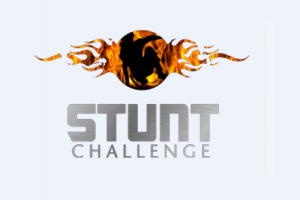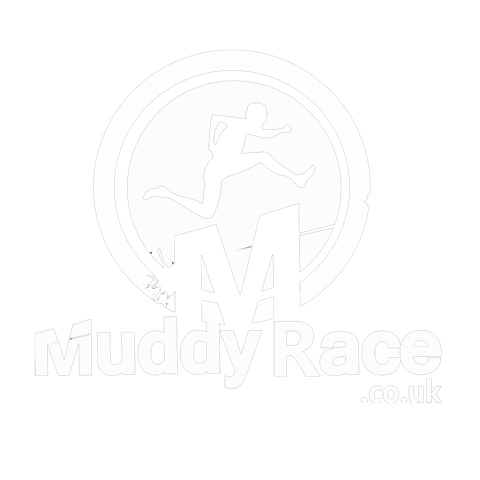My name is Carl Sanderson, I am 41 and I suffer from Mild Haemophilia A. My condition is inherited and affects my blood’s ability to clot.
This does not mean that I am likely to bleed to death from a minor cut or to bleed more quickly; it means that I will bleed for longer and it is likely to be internal bleeding into my muscles and joints. It also means that I have to do things a little differently from other people and things that we take for granted, such as playing some contact sports or pursuing dreams of a career in the Royal Marines, are not open to me.
Haemophilia is all I have known; and despite having this condition I decided to take a stand against the mindset that “you are not allowed” or the “I cannot do this” attitude that people have when you say you have my condition.
At the start of 2012, after coming to the realisation that I was overweight and unhappy, I was talking to a friend about wanting to get fitter and combining this with something fun for my 40th birthday. He told me about an event called Tough Mudder; a 12 mile long obstacle course race designed by the British Special Forces that tested your strength, stamina, mental grit and camaraderie.
I was instantly interested and after researching the event on the internet and watching YouTube videos of the races; I decided that this would be a perfect goal for me to aim for and to celebrate my 40th birthday in 2013.
This naturally excited me, I had something to aim for and train for. One thing stood in my way; the obstacle that I had faced every day ‘Haemophilia’. After speaking to my friends and work colleagues about my aim and my plans, it was met with a lot of cynicism and the attitude that had dogged me for my entire life. I was told repeatedly “you have got no chance of doing that” or “you cannot do that you have Haemophilia - you will kill yourself”.
These comments cut through me and I was naturally distressed. However they gave me the impetus I needed and my mind was set. I wanted to train and take on Tough Mudder with my disability. Before I got caught up in this dream however, I had to get medical advice.
I went back to the Haemophilia centre at RVI Newcastle where I had spent some much of my time previously. After the initial shock and once again being told I was crazy, the staff said they would support me. This was a huge weight off my mind and we discussed a treatment plan for me to ensure that I could compete and overcome this challenge.
This involved me taking injections of Factor VIII Recombinant (Factor VIII is required in your blood in order for it to clot) before and after an event making sure that I had the correct level of clotting factor in my blood to help prevent any bleeding.
There were still risks but with their support I knew I could do Tough Mudder with my disability. However this was no easy task as at the time of making this plan. I was 17 stone and hadn’t done any form of exercise in a long time.
The issue with being this heavy was that it put a lot of pressure on my knees and ankles, which could cause bleeds into them. This made it particularly dangerous to even consider doing something like this. January 2012 marked the beginning or my journey and I began to eat a healthier food regime and began to train. However the weight loss was one of the easier issues, the main obstacle I faced was my Haemophilia.
I had gone from doing no exercise to running, circuit training and other forms of training nearly every single day in a bid to be ready. My training progressed well and exceeded my expectations. Six months in and I had put myself in a position where I was ready to take on the challenge.
The only issue was that I managed to achieve this a year earlier than I had expected and so I had got to the party far too early as my 40th birthday was still 12 months away. I guess I had underestimated what determination can do to you along with the will to achieve.
I was caught up in the emotion of it and I did not want to wait another year. I decided to up the stakes and I entered Tough Mudder North West.
Saturday 17 November 2012 marked the day where I faced my dream and the challenge. It was absolutely freezing and I was stood in a field with so many people screaming and shouting. The cold could not dampen my spirits. I was excited and nervous at the same time. However I had made it to the start line and that in in itself had been an achievement. I merely had to overcome 22 obstacles and I would prove to everyone, and more importantly myself, that an obstacle course race could be done with a with a disability and I had to prove it.
I found the whole course very challenging if I am honest. Even the first obstacle which was just a small wall, a warm up and the entry to the start line, took it out of me and I was conscious that I could quite easily fall or drop badly that would be game over and more importantly cause the bleeds to start. The terrain also became an issue, with the uneven ground proving a challenge for my ankles, and as I made my way round doubt engulfed me.
An obstacle known as “walk the plank” scared the life out of me, but for once it was due to something other than my condition as I have a fear of heights, but this was nothing compared to the feelings I got when I faced Everest.
On watching numerous able bodied competitors run up that hill and fail to make the connection with the top resulting in a hard face plant to the ground; the danger became only too apparent and I knew that I could have been in trouble. If they could not make it - what chance did I have?
I had made it this far though and I thought to myself that I could do this, fortunately this belief, or madness, was well founded and I made it up Everest on my first attempt with the help of my team.
I was safe and I had made it. On crossing the line I became quite emotional and I felt an overwhelming sense of achievement. I had proved that I could do an obstacle course race, even with Haemophilia. The care plan put in place before the event by my doctor had worked and had helped limit the internal bleeding. I had tried to take care when facing an obstacle. I had to hope that these measures were enough to ensure I would be okay in the coming days.
From that moment on I recognised a way to help change the “you cannot do that” attitude of Haemophilia and raise awareness for bleeding disorders. But in order to do this I needed to do more than just compete at an event, although this was a challenge in itself, I had to raise my game and do something special.
I decided to do two Tough Mudders in one weekend to raise money for the Haemophilia Society. I achieved this in 2014 and it spurred me on to keep going and to keep fighting to help others and raise awareness. I have also spent a lot of time on the Haemophilia Society Facebook page talking to other people with Haemophilia and also parents of children with it. One family has stood out, the Bennett family who had a young son Jack also with Haemophilia at the same levels as myself.
Jack was a very talented and keen footballer but had been stopped from playing by his Football Centre. After hearing what other people with Haemophilia had done and achieved, his parents started to question this and not just accept that he could not do the thing he loved and play football.
These events gave me renewed optimism to continue to do the unexpected, challenge yourself and show that you can achieve your dreams, even with a disability. I want to give faith to all of those people with Haemophilia, like Jack, that live in a world where they are told they cannot do the things they love due to their condition.
My condition is just an obstacle and through careful planning and support it can be overcome and you can live with it. More importantly you can have a normal life.
2015 will mark a massive year for me as I attempt to complete all 16 Tough Mudders in the United Kingdom and hopefully find the funding to make the journey to World’s Toughest Mudder in Las Vegas. In addition I also want to give something back to those people who have given their time and support to me at the RVI Newcastle Haemophilia Centre.
More information about my cause can be found here and if you would like to help, you can donate here Just Giving page
If you would like to find out more about Haemophilia and my journey watch my documentary below. I would like to thank my friends; family and the staff at RVI Newcastle for their patience, their love and their support.





